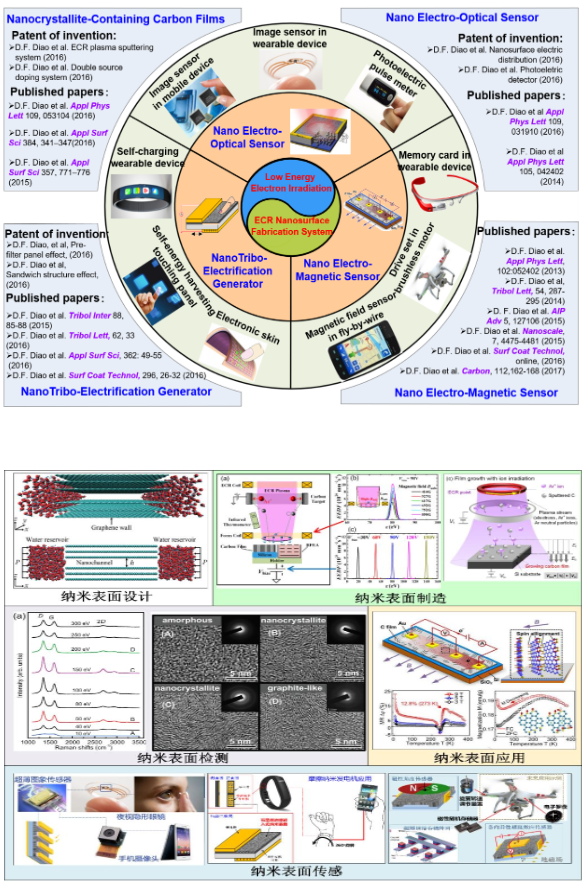- About
- Research Platform
- Guangdong Provincial Key Laboratory of Micro/Nano Optomechatronics Engineering
- Shenzhen Key Laboratory of Advanced Manufacturing Technology for Mold & Die
- Shenzhen Key Laboratory of Electromagnetic Control
- Shenzhen Autonomous Unmanned System and Intelligent Operation Joint Laboratory
- Shenzhen Key Laboratory of Urban Rail Transit Technology
- Guangdong Provincial Key Laboratory of Micro/Nano Optomechatronics Engineering
- Research Institutes
- Institute of Semiconductor Manufacturing Research
- Institute of Precision Machining and Forming Technology
- Institute of Nano-surface Science and Engineering
- Additive Manufacturing Institute
- Institute of Automation Shenzhen University
- Institute of Intelligent Equipment and Detection Technology
- Institute of Human Factors Engineering
- Institute of Power Electronics and Power System Control Technology
- Institute of Robotics and Intelligent Equipment
- Institute of Semiconductor Manufacturing Research
Introduction to the Institute
With Distinguished Professor Diao Dongfeng as the leader, the Institute of Nanosurface Science and Engineering of Shenzhen University (referred to as Nanosurface http://nanosurface.szu.edu.cn/) was established in December 2012. Focusing on "nano-surface design-manufacturing-detection (characterization)-sensing (device)-application (industrialization)", the growth mechanism and characteristics of nanostructured carbon-based thin films under electron/ion irradiation, the ultra-low friction interface electron behavior, ultra-high resolution in situ observation and testing of nanostructured surface behavior under multi-physics fields, etc. Through the operation modes of "introduction of high-level talents", "construction of laboratory platforms," and "publishing first-class academic achievements, applying for high-quality invention patents, and manufacturing nano-devices or systems", the goal is to achieve leadership in both international academic frontiers and major national needs. Developments in the field of nano-surface science and engineering.
Since 2013, with the funding of RMB 17 million for special professors at Shenzhen University, RMB 17 million for high-end talent research in Shenzhen, and RMB 30 million for high-level university construction, a 200-square-meter clean-room laboratory with an overall level of 10,000 and a local level of 100 has been built. The center is 100 square meters, the environmental electron microscope room is 100 square meters, and various advanced equipment related to nano-surface science and engineering research It has a supercomputing center workstation for nano-surface design; a surface Opto-magneto-electric energy processing system under electron cyclotron resonance plasma electron-ion irradiation for nano-surface manufacturing; a multi-functional testing system for tribological characteristics in extreme environments for nano-surface evaluation; a rapid scanning atomic force microscope scratch instrument; a Hall effect instrument; an AFM tip-enhanced Raman spectrometer for in-situ characterization; and in-situ observation, analysis, and testing of nanostructured surfaces. Ultra-high resolution double spherical aberration environmental transmission electron microscopy and transmission electron microscopy in-situ friction test instruments In the future, through the construction of a public testing platform for large-scale instruments, the Institute of Nano-Surface Science and Engineering will be built into a multidisciplinary integration, providing a new experimental platform for the international academic frontier and the technological innovation of "Nano-Surface Science and Engineering" on major national equipment.
The Institute of Nano-surface Science and Engineering recruits talent from all over the world. The current research team includes 1 distinguished professor, 6 lecturers, 3 postdoctoral fellows, and 6 doctoral candidates. Every year, it plans to recruit 1-2 specially appointed professors, 1-2 young lecturers, 2-4 postdoctoral fellows, 1-2 doctoral students, and more than 2 master students.

Representative achievements
[1] Cheng Chen, Peidong Xue , Xue Fan, Chao Wang and Dongfeng Diao *, Friction-induced rapid restructuring of graphene cap layer at sliding surfaces: short run-in period, Carbon, 130 (2018) 215-221.
[2] Liangliang Huang, Yuanyuan Cao and Dongfeng Diao*, Nanosized graphene sheets induced high electrochemical activity in pure carbon film, Electrochimica Acta, 262 (2018) 173-181.
[3] Chao Wang and Dongfeng Diao*. Self-magnetism induced large magnetoresistance at room temperature region in graphene nanocrystallited carbon film, Carbon, 112 (2017) 162-168.
[4] Chao Wang, Xi Zhang and Dongfeng Diao*. Nanosized graphene crystallite induced strong magnetism in pure carbon films, Nanoscale, 7 (2015) 4475-4481.
[5] Cheng Chen, Xue Fan* and Dongfeng Diao*. Low-energy electron irradiation induced top-surfacenanocrystallization of amorphous carbon film, Applied Surface Science, 384 (2016) 341-347.
[6] Xue Fan and Dongfeng Diao*. The adhesion behavior of carbon coating studied by re-indentation during in situ TEM nanoindentation, Applied Surface Science, 362 (2016) 49-55.
[7] Wencong Chen, Xi Zhang and Dongfeng Diao*, Low-energy electron excitation effect on formation of graphene nanocrystallites during carbon film growth process, Applied Physics Letters, 111(2017)114105.
[8] Cheng Chen, Chao Wang and Dongfeng Diao*. Low energy electron irradiation induced carbon etching: Triggering carbon film reacting with oxygen from SiO2 substrate, Applied Physics Letters, 109 (2016) 053104.
[9] Lei Yang, Qi-Zhang and Dongfeng Diao*, Cross-linking-induced frictional behavior of multilayer graphene:origin of friction, Tribology Letters, 62 (2016) 33.
[10] Xi Zhang, Chao Wang, Chang Q Sun and Dongfeng Diao*. Magnetism induced by excess electrons trapped at diamagnetic edge-quantum well in multi-layer graphene, Applied Physics Letters, 105 (2014) 042402.
